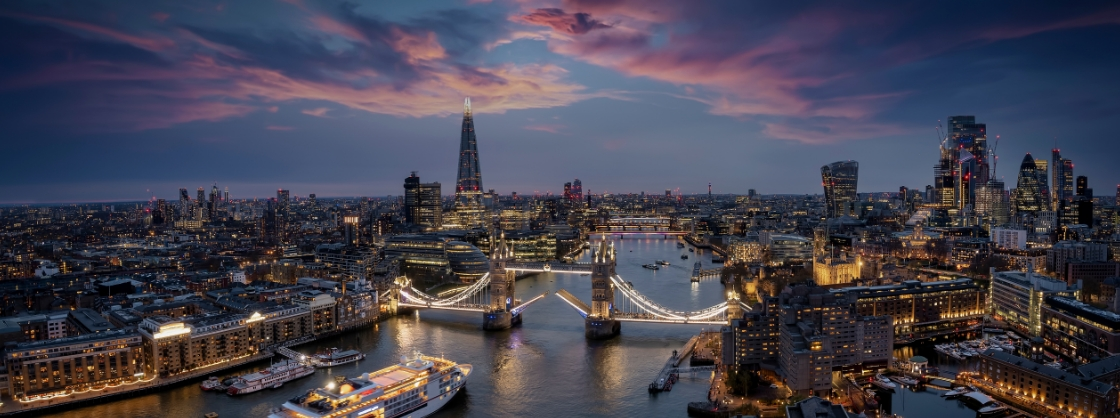Detailed Guide to London Zones 1 to 6
Table of Contents
London is the capital city of England and the United Kingdom, stretching an area of 1,572 km2. There are 32 boroughs in London, which requires an efficient transportation system. Thus, London is divided into different zones, namely 1-9 zones, but most fit into 1-6 London zones.
Zone 1 is central London, and Zone 9 is the outskirts of London.
The London zone system was developed to connect these zones. Each zone is given a station on the London Underground, London Overground, Docklands, Light Railway, and National Railway.
London is expensive, and cracking the way to travel through these zones can save you big bucks! So, here’s a guide to familiarize you with each zone in London. Find out the zone that is close to your student accommodation in London.
What are the different zones in London?
There are 6 main London zones which are listed below:
- Zone 1- Central London
- Zone 2- Inner London
- Zone 3- Between Inner London and Outer London
- Zone 4- Outer Part of London
- Zone 5- Suburbs of London
- Zone 6- Suburbs of London
What is London Zone 1?
London Zone 1 covers central London and the fare zones 2, 3, 4, 5, and 6, which form a concentric circle around it. It is the main transportation station for London’s zonal fare system.
Areas covered in Inner London: Central London: City of London, Camden, Hackney, Islington, Kensington & Chelsea, Lambeth, Southwark, Tower Hamlets, Wandsworth and Westminster
The major attractions in London Zone 1 are Big Ben, the Houses of Parliament, the Tower of London, the London Eye, Madame Tussauds, the British Museum, the Science Museum, etc.
What is London Zone 2?
London Zone 2 is the inner city that rings around Zone 1. It is not in the city center but closer to the center than zone 3. The zone covers areas and neighborhoods close to central London.
The areas covered in Inner London are Camden, Hackney, Hammersmith & Fulham, Islington, Kensington & Chelsea, Lambeth, Lewisham, Newham, Southwark, Tower Hamlets, Wandsworth, and Westminster.
Areas covered in Outer London: Brent, Ealing, Greenwich, Hounslow, etc.
The main attractions in London Zone 2 are Regents Park, London Zoo, Shoreditch, Arsenal FC Stadium, Chelsea FC Stadium, and Clapham Common.
What is London Zone 3?
London Zone 3 is the inner zone of Transport for London’s zonal fare system. London Zone 3 rings around zone 2. It is 29 minutes away from Central London.
Areas covered in Inner London: Camden, Hackney, Haringey, Islington, Lambeth, Lewisham, Newham, Southwark, Wandsworth, etc.
Areas covered in Outer London: Barnet, Brent, Bromley, Croydon, Ealing, Greenwich, Hounslow, Merton, Richmond upon Thames, Waltham Forest, etc.
The main attractions in London Zone 3 are Wimbledon, Kew Gardens and London City Airport, Elephant and Castle ( 11 min underground), London Bridge (12 mins), etc.
What is London Zone 4?
London Zone 4 is the outer zone of Transport for London’s zonal fare system. Zone 4 rings around zone 3. London Zone 4 is only 33 minutes from Central London (Zone 1).
This zone is emerging as a livable area in London.
Areas covered in Inner London: Barking and Dagenham, Barnet, Bexley, Brent, Bromley, Croydon, Ealing, Enfield, Greenwich, Hounslow, Kingston upon Thames, Merton, Redbridge, Richmond upon Thames, Sutton, Waltham Forest, etc.
Areas covered in Outer London: Epping Forest (Essex)
The main attractions in Zone 4 are Petersham Nurseries, Eltham Palace, Modern Hall Park, Bang Bang Oriental, Kingston Upon Thames, RAF Museum, etc.
What is London Zone 5?
London zone 5 is an outer zone and rings around zone 4. Zone 5 is 30 minutes away from Central London (zone1)
Zone 5 covers Outer London and Outside London areas:
Areas covered in Outer London: Barking and Dagenham, Barnet, Bexley, Bromley, Croydon, Ealing, Enfield, Harrow, Hillingdon, Hounslow, Kingston upon Thames, Richmond upon Thames, Sutton, Waltham Forest, etc.
Areas covered in Outside London: Epping Forest (Essex), Epsom and Ewell (Surrey)
The main attractions in London Zone 5 are Eel Pie island, Ruislip Lido, Alexandra Palace, Kew gardens, etc.
What is London Zone 6?
London Zone 6 is the outer zone of Transport for London’s zonal fare system. Zone 6 rings around zone 5. Zone 6 covers outer London and outside London areas:
Areas covered in Outer London: Bexley, Bromley, Croydon, Enfield, Harrow, Havering, Hillingdon, Hounslow, Kingston upon Thames, Richmond upon Thames, etc.
Areas covered in Outside London: Elmbridge (Surrey), Epping Forest (Essex), Epsom and Ewell (Surrey), Hertsmere (Hertfordshire), Reigate and Banstead (Surrey), Tandridge (Surrey), Three Rivers (Hertfordshire), etc.
What are the types of Transportation in London Zones?
Staying in London is a blessing in disguise. It’s expensive, yet with its cost-efficient transportation system, it’s cheap, comfortable, and easy to travel around the London zones. Below are the types of transport in London zones:
London Underground
The London Underground is one of the world’s oldest underground railways. It is a rapid transit system serving all nine London zones. Also known among the locals as the ‘Tube,’ it is identified by its blue and red roundel across the city. It is part of the TfL transport system with over 270 stations across London.
The 24-hour service is on Jubilee, Victoria, Central, Northern and Piccadilly Lines.
Payment: You can pay using an Oyster card or contactless.
London Overground
London’s overground suburban rail network serves the London zones. It is part of the National Rail, but a branding of TfL, which is assigned as an Orange roundel in all stations, maps, trains, etc.
London Overground operates above street level from the city center to another metropolitan area outside of central London. It covers about 71% of London districts and has 100 stations. London Overground has limited 24-hour services.
Payment: You can pay using an Oyster card or contactless.
Docklands Light Railway
Docklands Light Railway is an automated light metro that runs on 149 trains except for the four below-ground stations. It is part of the London Ground Network and covers the dockland areas of London, east and south-east London, and connects with a cable car and Emirates Airlines.
On weekdays, it starts from 5:30 to 12:30 a.m., while on weekends, it starts late and finishes early.
Payment: You can pay using an Oyster card or contactless.
London Buses
London buses have been part of public transportation since 1829. They are cheap, efficient, and part of the zone system. The buses travel to many routes and bus stops, and the hopper fare allows you to take many rides at a low price.
If you have a travel card, you can use it all over London, from zone 1 to zone 6.
Payment: You can pay using an Oyster card or contactless.
Emirates Air Line (Cable Car)
The London cable car is known as Dangleway, but today, it is called the Emirates cable car as it is sponsored by Emirates. The cable car links across the River Thames, London, England. It is about 90 m ft, offering panoramic views of London city. The cable car is part of the Tlf transport system traveling from Greenwich to Royal Victoria Dock.
The cable car travels to all London zones.
Payment: You can pay using an Oyster card or contactless.
The River Bus
The river bus has six routes from 23 piers between Putney and Woolwich. It is operated by Upper Boat by Thames Clippers. The river bus is a covered boat with an open outside deck area. There’s a place to eat and enjoy snacks, too. You can also access toilets. Bikes are allowed, and dogs need to be on a lead.
The boat departs every 20 minutes; therefore, plan your journey for the zones in London. The River Bus is among the best ways to enjoy London’s riverfront and scenic beauty.
Payment: You can pay using an Oyster card or contactless.
How do I pay for the London travel zones?
The most common modes of payment for traveling on London transport systems are listed below:
Travelcards
Travel cards are available on a weekly and monthly pass, giving you unlimited travel on trams and buses.
It is valid in all London zones. It is a bit more expensive than an Oyster card. They can be loaded into your Oyster cards.
To travel from Zone 1 to Zone 3, you will need a Zone 1-3 travel card.
A Day Travel Card Cost
- Zones 1-2: Cost £15.20
- Zones 1-3: Cost £15.20
- Zone 1-4: Cost £15.20
- Zone 1-5: Cost £21.50
- Zone 1-6: Cost £21.50
Oyster Cards
The visitor oyster card is the only card offering discounts on all London fare zones. It’s non-refundable. The regular oyster card doesn’t expire. It is refundable with a £5 security deposit. The top-up costs £5, and the card price is £7. It is available at all tubes, most overground and Elizabeth line stations, and DLR stations.
Oyster cards are not accepted between Reading and Iver.
A Day Oyster Card Cost
Zones 1-2: Cost £8.10
Zones 1-3: Cost £9.60
Zone 1-4: Cost £11.70
Zone 1-5: Cost £13.90
Zone 1-6: Cost £14.90
Contactless Payment
A foreign card is accepted as a form of contactless payment option. It can be a credit/debit card, and you can make countless purchases. The card can be used to pay for all modes of public transportation. If you have used an Oyster card, it works similarly. You can swipe at the ticket barriers at the start and end of your journey. Make sure you keep track of the cost of the ride.
Add supported payment to Apple Pay and swipe through iPhone or watch.
[faq id=”16708″]


